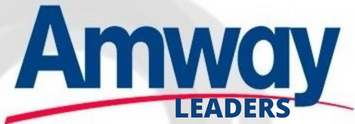Ruth Krauss
Ruth Ida Krauss (July 25, 1901 – July 10, 1993) was an American writer of children's books, including The Carrot Seed, and adult poems. Many books are still in print.
Early life and education
Ruth Krauss was born on July 25, 1901 to Julius Leopold and Blanche Krauss in Baltimore, Maryland.
As a kid, Ruth had several health difficulties, including the unusual autoimmune pemphigus disorder. She began to write and illustrate her own stories when she was still a youngster .
In 1917, after her sophomore year, Ruth went to a local high school to focus on art study.
She enrolled in the Maryland Mechanical Arts Institute (now known as the Maryland Institute College of Art).
The school's focus on applied arts didn't suit her and she left after about a year. Her next stop was a girls camp, Camp Walden in Maine, where she discovered her love of writing; the 1919 camp yearbook contains her first published piece of writing.
After the camp, she spent some time studying violin in the preparatory programme of Peabody Institute of Music. Her professors thought her a talented but undisciplined musician .
Ruth's father died late 1921, prompting Ruth to leave school. She took several office jobs. In 1927, she opted to enrol at New York's Parsons School of Design.
Graduating from Parsons in 1929, as the Great Depression began, she found it difficult to get an illustrator's job. In this period, she found the first pictorial book jacket for the Modern Library (Alice in Wonderland, 1932). .
During the 1940s, Ruth was a Writers' Laboratory member at New York's Bank Street College of Education.
Ruth married writer and crime novelist Lionel White in the 1930s, divorcing shortly before World War II.
Personal life and career
Personal life, career
Ruth Krauss married book author Crockett Johnson in 1943. They collaborated on many publications, including The Carrot Seed, How to Make an Earthquake, Is This You? and Happy Egg.
Maurice Sendak illustrated another eight of her books, starting with A Hole Is to Dig (1952), launching Sendak's career.
The Krauss-Sendak collaborations created a variety of "unruly" and "rebellious" juvenile protagonists.
The unusual meaning of Krauss's writing in this book—with phrases like "A party is to make young children happy"—became a cultural phenomenon when the book was originally published and helped retain its popularity.
Krauss also illustrated her own books.Besides her children's novels, Krauss wrote three poetry collections and adult verse plays.
Recognition
Two books that Krauss wrote were runners-up for the prestigious Caldecott Medal, which is awarded to children's book illustrators:The Happy Day (1950) and A Very Special House (1954).
Maurice Sendak characterised Krauss as a giant in the world of children's literature, saying: "Ruth broke rules and invented new ones, and her respect for the natural ferocity of children bloomed into poetry that was utterly faithful to what was true in their lives."
He honoured her in the New York cover illustration for Sept. 27, 1993, showing a homeless boy using Krauss' book A Hole Is Is.
Books
Children's books
- A Good Man and His Good Wife, illustrated by Ad Reinhardt (1944); re-illustrated by Marc Simont (1962)
- The Carrot Seed, illus. Crockett Johnson (1945)
- The Great Duffy, illus. Mischa Richter (1946)
- The Growing Story, illus. Phyllis Rowand (1947)
- Bears, illus. Rowand (1948); re-illus. Maurice Sendak (2005)
- The Happy Day, illus. Marc Simont (1949) —a Caldecott Medal Honor Book for Simont
- The Big World and the Little House, illus. Simont (1949).
- The Backward Day, illus. Simont (1950)
- I Can Fly, illus. Mary Blair (1950)
- The Bundle Book, illus. Helen Stone (1951)
- A Hole is to Dig: A First Book of First Definitions, illus. Sendak (1952)
- A Very Special House, illus. Sendak (1953) —a Caldecott Medal Honor Book for Sendak
- I'll Be You and You Be Me, illus. Sendak (1954)
- How To Make An Earthquake, illus. Johnson (1954)
- Charlotte and the White Horse, illus. Sendak (1955)
- Is This You?, by Krauss and Johnson (1955)
- I Want to Paint My Bathroom Blue, illus. Sendak (1956)
- Monkey Day, illus. Phyllis Rowand (1957)
- The Birthday Party, illus. Sendak (1957)
- Somebody Else's Nut Tree, and Other Tales from Children, illus. Sendak (1958)
- A Moon or a Button: A Collection of First Picture Ideas, illus. Remy Charlip (1959
- Open House for Butterflies, illus. Sendak (1960)
- Mama, I Wish I Was Snow; Child You'd Be Very Cold, illus. Ellen Raskin (1962)
- A Bouquet of Littles, illus. Jane Flora (1963
- Eyes, Nose, Fingers, Toes, illus. Elizabeth Schneider (1964)
- What a Fine Day for ..., illus. Remy Charlip, music by Al Carmines (1967)
- The Happy Egg, illus. Johnson (1967)
- This Thumbprint: Words and Thumbprints (1967)
- The Little King, the Little Queen, the Little Monster and Other Stories You Can Make Up Yourself (1968)
- If Only (1969)
- I Write It, illus. Mary Chalmers (1970)
- Under Twenty (1970)
- Everything Under a Mushroom, illus. Margot Tomes (1973)
- Love and the Invention of Punctuation (1973)
- Little Boat Lighter Than a Cork, illus. Esther Gilman (1976)
- Under Thirteen (1976)
- When I Walk I Change the Earth (1978)
- Somebody Spilled the Sky, illus. Eleanor Hazard (1979)
- Minnestrone (1981)
- Re-examination of Freedom (1981)
- Love Poems for Children (1986)
- Big and Little, illus. Mary Szilagyi (1987)
- And I Love You, illus. Steven Kellogg (1987)
Poetry and verse plays
- There's A Little Ambiguity Among the Bluebells and Other Theater Poems (1968)
- The Cantilever Rainbow, illus. Antonio Frasconi (1965)
- This Breast Gothic (1973)


0 comments: